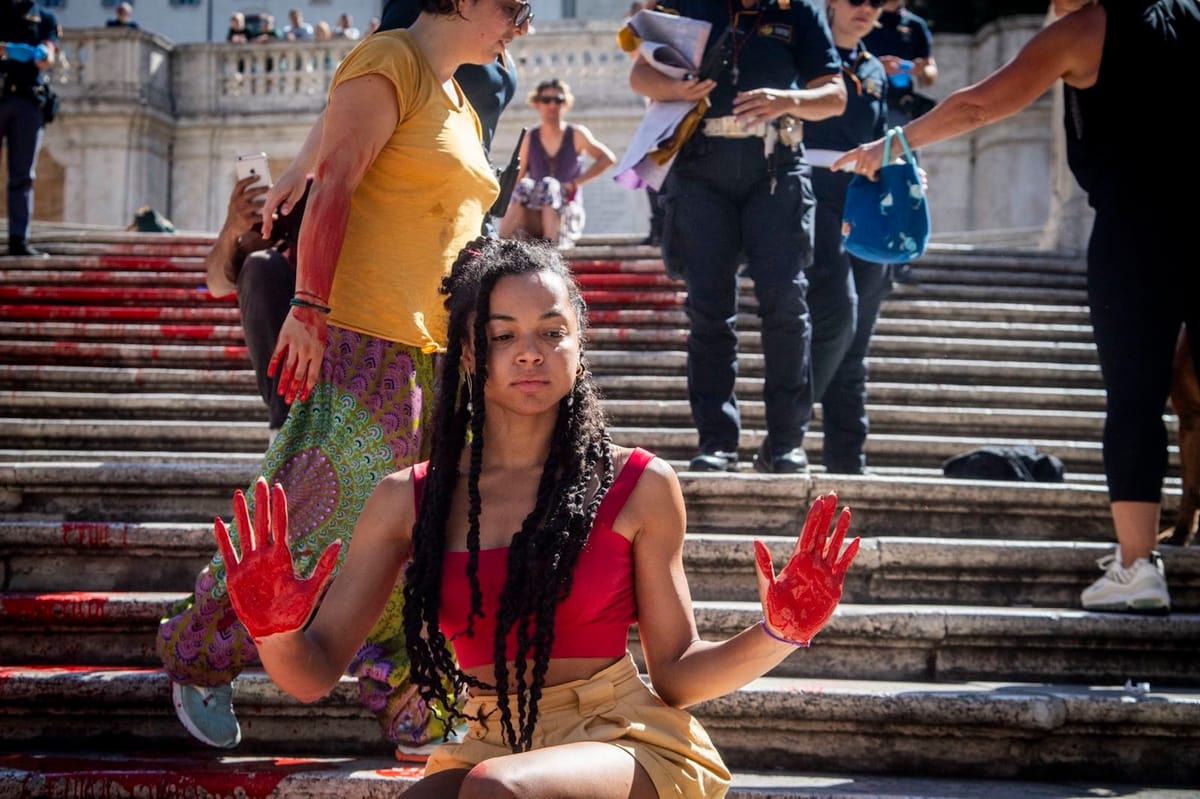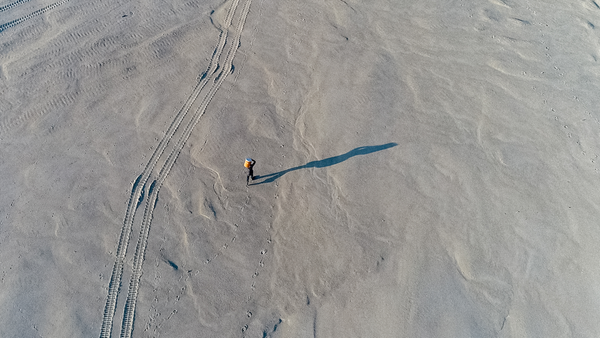Required Reading
This week: curation and BDSM, America’s first lesbian magazine, myths about the human brain, and is smutty literature hurting our romantic relationships?

‣ Kellie B. Gormly writes for Smithsonian Magazine about Edythe Eyde — also brilliantly known as “Lisa Ben” — who founded the first lesbian magazine in the US in 1947, when homosexuality was criminalized under state sodomy laws:
Eyde, a 26-year-old lesbian who had recently moved from Northern California to L.A. to escape her oppressive family, spent her downtime at work typing up issues of Vice Versa. Using carbon paper to create duplicates of typed pages, she produced a total of just 12 copies per issue.
The free, rather plain publication featured no bylines, no photos, no ads and no masthead. It had a blue cover and consisted of typed pages stapled together. Eyde passed it around to friends, who then passed the copies on to other friends. She also mailed copies to a small number of people and gave out issues at gay bars. Overall, Vice Versa probably had no more than 100 readers, Faderman says.
The magazine’s articles ranged from book and film reviews to poetry to reader commentary. Eyde sometimes adopted a protofeminist tone, praising “time-saving innovations such as frozen foods and electrical appliances as making it easier for women to live independently of men,” wrote cultural historian Rodger Streitmatter in a 1998 journal article.
‣ Reflecting on a 2016 treaty unveiling ceremony at the National Museum of the American Indian, scholar Olivia Chilcote (San Luis Rey Band of Mission Indians) delves into the lack of federal recognition for Native tribes in California, including her own. She writes for the Los Angeles Times:
I felt humbled to be part of the unveiling ceremony and beamed with pride in my California Indian identity. But I also grew deeply uncomfortable, surrounded as I was by delegations of federally recognized tribes. I felt out of place as I remembered that no one had invited me or my tribe to participate in the historic occasion.
The treaty glaringly reminded me that the United States does not acknowledge the San Luis Rey Band of Mission Indians’ inherent sovereignty, despite our Gold Rush-era negotiations. I wondered why the museum did not inform my tribe about the event, and I could not help but think my community’s lack of federal recognition might be the reason. I looked at the treaty and saw Ka-wa-wish’s X-mark next to those of the Luiseño, Cupeño, Cahuilla and Serrano signatories. One hundred sixty-four years later, I stood alongside representatives of the very same people.
My experience at the unveiling illustrates the complexity and contradictions of unrecognized tribal status in California. The 18 treaties’ lack of ratification set the tone for the federal government’s long-standing uneven treatment of California Indian people and tribes. At the same time, the treaties became the key to strengthening California Indian activism in the early 20th century, which led to contemporary tribal pursuit of federal recognition.
‣ “Science opinion” can veer dangerously close to “science journalism,” and reporter Gregg Gonsalves and virologist John P. Moore argue in the Nation that the New York Times’s recent opinion pieces are undermining efforts to understand COVID-19:
The key point here is that we see a “science be damned” aspect to both Chan’s opinion piece and the decision to run it. No new facts were presented in the piece. And an awful lot of words were spent speculating about the alleged role of the National Institutes of Health as a key funder of virology research at the WIV when those dollars were a very small fraction of the institute’s funding, most of which the Chinese government provided. Much space was also allocated to promoting a “cover-up” argument that hinges on paperwork and not virology. All of this plays into the hands of right-wing politicians eager to bash science and find scapegoats. Science works slowly—for instance, it took years to understand the origin of HIV-1 in chimpanzees—and the arduous process of scientific discovery is being weaponized here to promote conspiracy theories and sinister motives without evidence to back them up.
From our perspective as researchers who have worked on AIDS for decades, we see analogies here to articles suggesting that HIV is not the cause of AIDS. Non-experts made these claims in the early years of the AIDS pandemic, but they were never granted space in The New York Times—indeed, quite the opposite.
‣ South by Southwest has officially ended its military sponsorships after over 100 artists pulled out of the music festival in support of Palestine, Selome Hailu reports for Variety:
Several music acts dropped out of the 2024 SXSW lineup in response to the Army sponsorship, citing the U.S. military’s relationship with Israel during the ongoing war in Gaza. Among the protestors was the Irish group Kneecap, who wrote that the “significant financial impact” they’d incur by boycotting “isn’t an iota of hardship when compared with the unimaginable suffering being inflicted every minute of every day on the people of Gaza.”
‣ Psychologist Robert Epstein takes a fascinating deep dive into the myths surrounding our brains — including that they are, in fact, not computers and shouldn’t be treated as such — for Aeon:
Because neither ‘memory banks’ nor ‘representations’ of stimuli exist in the brain, and because all that is required for us to function in the world is for the brain to change in an orderly way as a result of our experiences, there is no reason to believe that any two of us are changed the same way by the same experience. If you and I attend the same concert, the changes that occur in my brain when I listen to Beethoven’s 5th will almost certainly be completely different from the changes that occur in your brain. Those changes, whatever they are, are built on the unique neural structure that already exists, each structure having developed over a lifetime of unique experiences.
This is why, as Sir Frederic Bartlett demonstrated in his book Remembering (1932), no two people will repeat a story they have heard the same way and why, over time, their recitations of the story will diverge more and more. No ‘copy’ of the story is ever made; rather, each individual, upon hearing the story, changes to some extent – enough so that when asked about the story later (in some cases, days, months or even years after Bartlett first read them the story) – they can re-experience hearing the story to some extent, although not very well (see the first drawing of the dollar bill, above).
‣ Curator and writer eunice bélidor considers curation through the lens of BDSM, hospitality, and consent in an essay for C Magazine:
In a curatorial situation, hospitality “describes the premises and conditions under which the curatorial relations are created, shaped and modified.”2 As detaile by German art historian and curator Beatrice von Bismarck, hospitality can be viewed as a mechanism within which each curatorial encounter acquires its specific meaning or, as I argue, its own dynamic. In the art milieu, the different invitations hospitality extends are broad: to artworks, artists, curators, and critics, but also to institutions, visitors, and different publics. These “guests” do not start their relationships as familiar to one another, but “the curatorial situation offers all participants both space and time for their encounter; […] furthermore, it provides means to satisfy a wide range of needs, offering forms of material support and sustenance, as well as responding to the wish for recognition, respect and attention.”3 This is merely a preamble to understanding how the mechanism of hospitality plays out in ways that are similar to BDSM.
‣ Is smutty literature hurting our romantic relationships? Let’s talk about it, says Michelle Santiago Corté for the Cut:
“Up until now, I have been in the most ridiculous lesbian situationships,” Olivia, a 22-year-old artist from New York, tells me. “I was imbuing a lot of romance into situations that actually weren’t romantic,” because she was comparing her life to the smut she was reading online. At its worst, Olivia says, smut is like “a black hole” or “a void,” an endless stream of horny passages and happily ever after’s ready to help readers avoid reality. Olivia, who is now in a relationship with a partner who also reads and enjoys smut, knows her relationship to smut is healthy when she feels fed and titillated, instead of tired and “strung out.”
“There’s always a conversation that comes up with my friends,” 28-year-old TikTok creator Tanya tells me, “that we have too high of expectations because of the books we read.” She reads to feel what she’s not getting in her own love life, Tanya says, to escape and self-soothe. When Tanya first started reading smut consistently three years ago, she wanted to read the spiciest book she could find. She started by rediscovering the Fifty Shades series during the pandemic, then moving on to Three Simple Rules, by Nikki Sloane (set in an “illegal blindfold club”), and Q.B. Tyler’s Love Unexpected, a taboo novel. “I feel like the ‘addictive’ part of it comes from chasing that high when you read it the first time.” Now, she prefers as much storytelling between sex scenes as the sex scenes themselves, preferably with “female main characters who feel empowered.” The kind where the protagonists always fall in love and have amazing sex. “I love a formula,” she says.
‣ Imagine rejecting this crocheted masterpiece of a CharliXCX album cover (during Pride Month no less ...):
‣ Men being men, NYC edition:
https://www.tiktok.com/@step_by__steph/video/7383808915303173407
‣ No check to fight over when you’re at the public library!
https://www.tiktok.com/@richmondhillpl/video/7383047561201863941
‣ Bronzino knew what he was doing:
https://www.tiktok.com/@humansizedperson/video/7364463441047866656
Required Reading is published every Thursday afternoon, and it is comprised of a short list of art-related links to long-form articles, videos, blog posts, or photo essays worth a second look.





